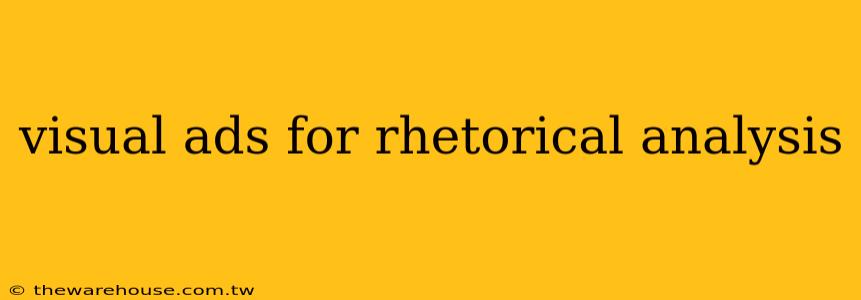Unpacking the Message: A Guide to Rhetorical Analysis of Visual Ads
Visual advertisements are everywhere, bombarding us with messages that aim to influence our thoughts and actions. From the billboards we see on our commute to the Instagram posts we scroll through, these images are more than just pretty pictures. They are carefully crafted pieces of communication designed to persuade us, and understanding their rhetorical strategies is crucial in a world saturated with marketing.
Why analyze visual ads?
Understanding how visual ads work allows us to:
- Become more critical consumers: We can discern the persuasive techniques used and make informed decisions about the messages we accept.
- Improve our own communication skills: Analyzing visual rhetoric helps us identify effective techniques to apply in our own presentations, designs, and social media content.
- Gain insights into cultural values and trends: Ads reflect societal norms, beliefs, and anxieties, offering a window into the cultural context of their creation.
Key elements of visual rhetoric:
1. Visuals:
- Images: What is depicted? What emotions do the images evoke? How are colors, lighting, and composition used?
- Typography: What font is used? How does the size, style, and placement of text influence the message?
- Layout and Design: What is the overall visual structure? How does it guide the viewer's eye?
2. Content:
- Headline and Slogan: What message is conveyed? What is the key takeaway?
- Body copy: Does the text provide additional information, support the visuals, or create a narrative?
- Call to action: What does the ad encourage the viewer to do?
3. Context:
- Target audience: Who is the ad intended for? What are their needs and desires?
- Cultural context: What social and political values are reflected in the ad?
- Historical context: How does the ad relate to broader historical trends or events?
Putting it into Practice:
Let's analyze a popular example:
"I'm Lovin' It" Campaign by McDonald's:
Visuals: The campaign features iconic imagery of McDonald's products, often with bright colors and exaggerated proportions, creating a sense of fun and indulgence. The use of red, yellow, and gold hues evokes feelings of warmth, happiness, and appetite.
Content: The simple slogan "I'm Lovin' It" is catchy and memorable, associating positive feelings with the brand. The campaign often features celebrity endorsements, further amplifying the message and appealing to a wider audience.
Context: This campaign targets a broad audience, aiming to appeal to individuals seeking fast, convenient, and affordable meals. The use of humor and playful imagery aligns with contemporary social media trends and reflects the desire for escapism and enjoyment.
What can we learn from this analysis?
McDonald's leverages visual elements to create a positive association with their brand. The catchy slogan and celebrity endorsements enhance brand recognition and create a sense of universality and shared experience. The campaign's success lies in its ability to tap into the desires and needs of a wide audience, reflecting the power of visual rhetoric to influence our perceptions and behaviors.
Further Exploration:
Here are some resources for further exploration:
- "Visual Rhetoric: A Handbook" by James A. Porter provides a comprehensive framework for analyzing visual communication.
- "Visual Communication: Images with Messages" by William L. Severin and James W. Tankard delves into the theoretical underpinnings of visual communication.
- Academia.edu offers a wealth of research papers on visual rhetoric, including examples and case studies.
By exploring the world of visual ads with a critical eye, we can become more informed consumers and effective communicators in our own right.
